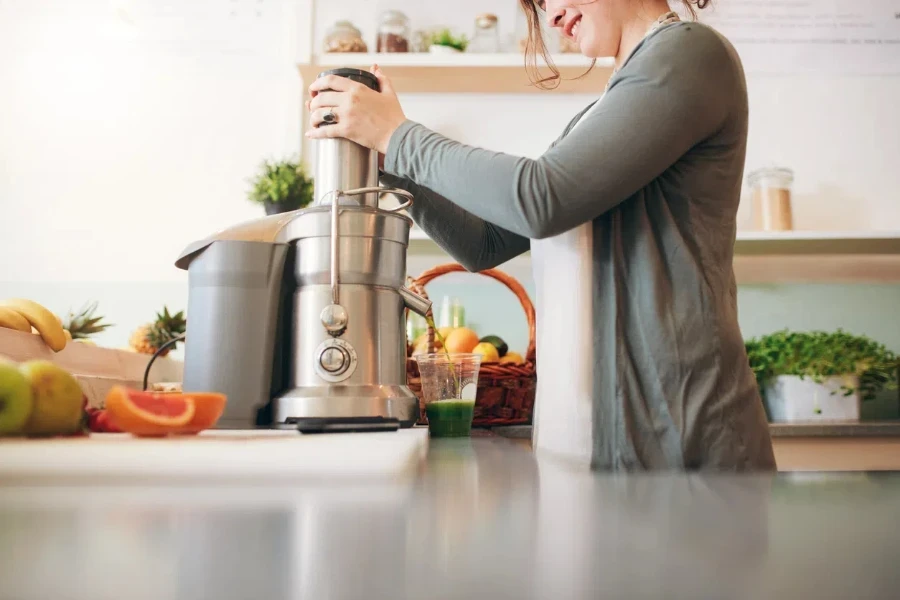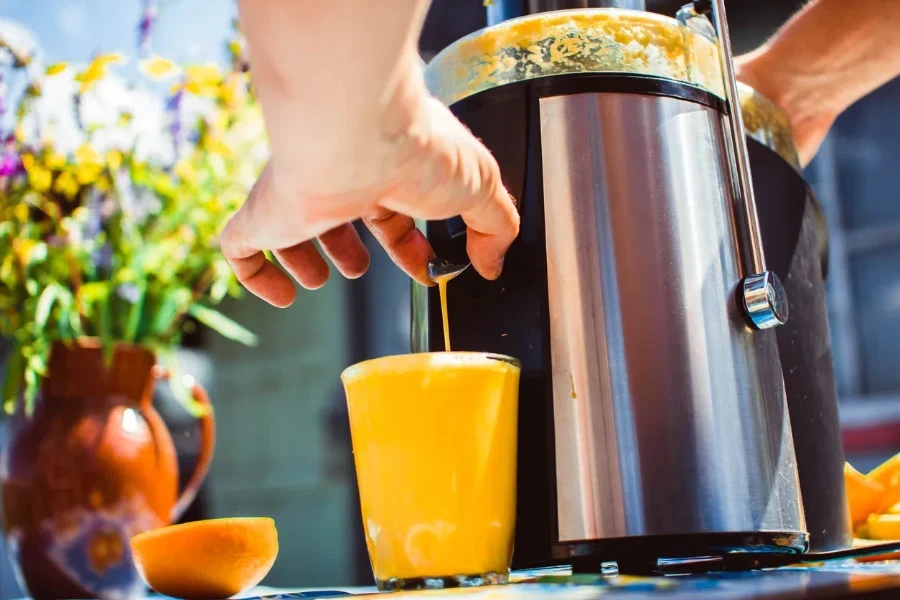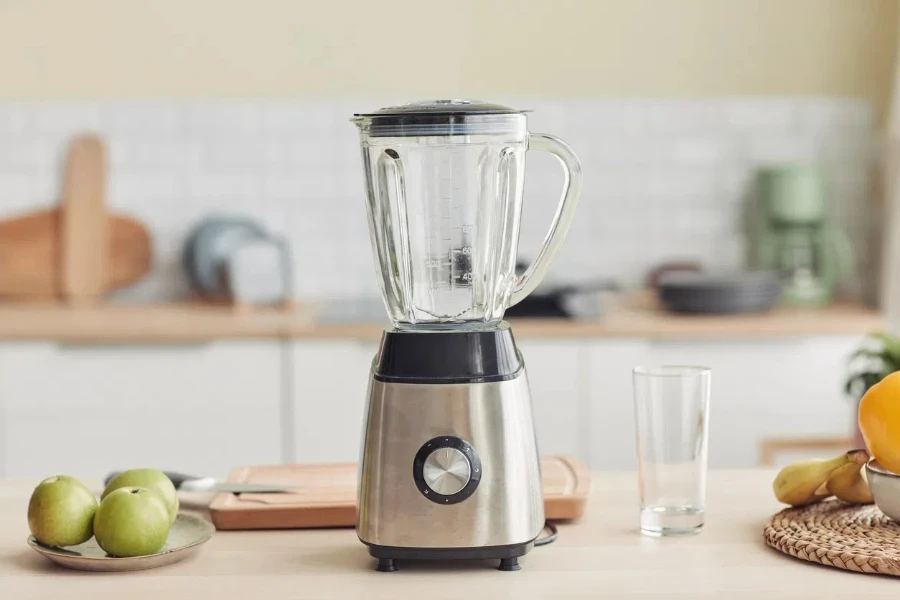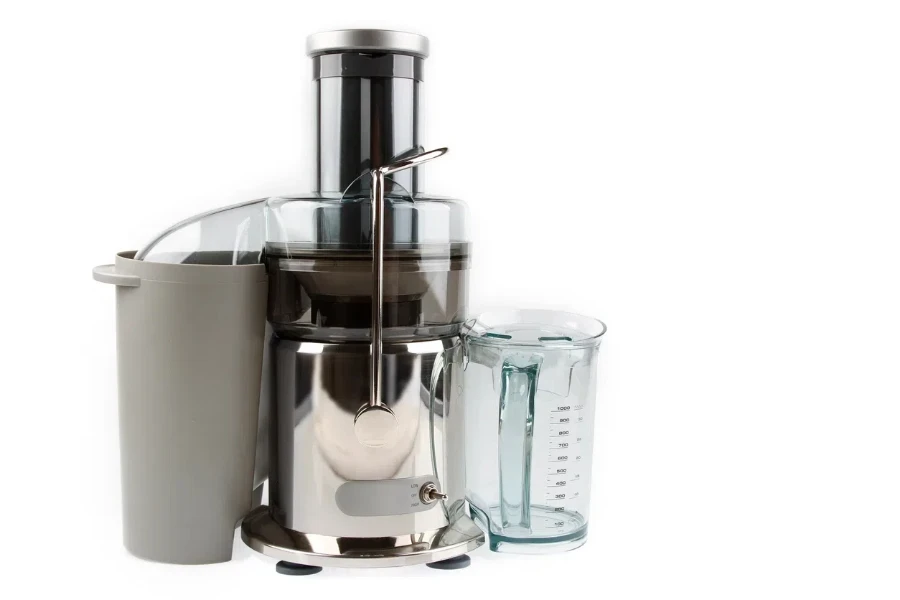In 2024, the global juice market is projected to hit USD 123.7 billion, driven by health trends and demand for fresh beverages. As we approach 2025, business buyers are keen on selecting the best commercial juicer machines to meet growing consumer preferences for nutritious drinks. Understanding market dynamics and technological advancements is crucial for wholesalers, retailers, and purchasing professionals to stay competitive and cater to evolving customer needs.
Table of Contents:
– Juicer Market: An Expanding Global Landscape
– In-Depth Analysis of the Commercial Juicer Market
– Key Considerations When Selecting a Commercial Juicer Machine
– Latest Technology Features in Commercial Juicers
– Pricing and Budget Considerations
– The Final Word
Juicer Market: An Expanding Global Landscape

The commercial juicer machine market is growing significantly worldwide, driven by increasing demand for fresh, natural, and healthy beverages. In 2024, the juice market is expected to generate around USD 123.7 billion in revenue, with USD 81.4 billion from at-home sales and USD 42.3 billion from out-of-home sales. The United States is set to lead with an anticipated USD 13.35 billion in 2024, highlighting its market dominance. The market is projected to grow steadily, with a compound annual growth rate (CAGR) of 5.27% from 2024 to 2028, reflecting strong consumer interest in juices.
In terms of volume, the market is expected to reach 36.2 billion liters in 2024, with 32.7 billion liters consumed at home and 3.5 billion liters out-of-home. The average home consumption per person is projected at 7.31 liters, indicating a growing preference for home consumption. This trend is driven by the convenience and health benefits of ready-to-drink juices, which suit fast-paced lifestyles. The home market’s volume growth rate is projected at 1.2% for 2025, showing continued expansion and consumer interest.
Health-conscious consumers are increasingly paying premiums for organic and cold-pressed juices, seen as more natural and less processed. This trend, along with the popularity of juice cleanses and detox programs, has fueled market growth. In Europe and Asia, there is a notable shift towards functional and fruit-based juices, catering to specific health benefits and local tastes. Market growth is supported by increased awareness of balanced diets and the benefits of consuming fruits and vegetables, driving demand for healthier beverages.
In-Depth Analysis of the Commercial Juicer Market

The commercial juicer machine market is shaped by key performance benchmarks and dynamics driving its growth. A major factor is the rising consumer preference for juices with functional health benefits, like immune support and digestion enhancement. This has led to innovations in juice formulations, with manufacturers adding vitamins, minerals, and antioxidants. Seasonal demand patterns also influence the market, with higher consumption during warmer months and in tropical regions.
Distribution channels are evolving, with eCommerce and retail sales in supermarkets and convenience stores gaining prominence due to their convenience and accessibility. Recent innovations include juicers with advanced features such as higher extraction efficiency, ease of cleaning, and noise reduction, enhancing user experience and meeting the demand for quality juicing solutions.
Technological advancements and consumer feedback influence juicer product lifecycles, leading to continuous improvements and new model introductions. Digitalization is crucial for brand positioning, as companies use social media and online platforms to engage consumers and promote products. Environmental regulations are also impacting market dynamics, emphasizing sustainable manufacturing and eco-friendly materials. Companies address customer concerns like ease of use, maintenance, and cost through strategic differentiation and niche market targeting, securing a competitive edge in the rapidly evolving market.
Key Considerations When Selecting a Commercial Juicer Machine

When choosing a commercial juicer machine, several important factors should be considered to ensure it meets your specific needs and performs optimally. Below are key aspects to guide your decision-making.
Types and Styles of Commercial Juicer Machines
Commercial juicers come in different types and styles, each catering to specific operational needs. The most common types are centrifugal, masticating, and triturating juicers. Centrifugal juicers are known for their speed, making them ideal for businesses with high juice demand. They use a fast-spinning blade to shred produce, separating juice from pulp. Masticating juicers, on the other hand, operate at slower speeds with an auger to crush produce. This method is efficient for extracting juice, especially from leafy greens and wheatgrass, and generates less heat, preserving more nutrients. Triturating juicers, or twin-gear juicers, offer thorough juice extraction. They handle a variety of produce, including hard vegetables and fibrous greens, making them suitable for businesses offering diverse juice options.
Performance and Functionality
A commercial juicer’s performance and functionality are crucial for meeting business demands. Key performance metrics include juice extraction speed, quality, and efficiency with different produce types. High-performance juicers should maximize juice yield with minimal waste, ensuring cost-effectiveness. Features such as multiple speed settings, automatic pulp ejection, and continuous juicing without overheating enhance functionality. For instance, automatic pulp ejection is beneficial in high-volume settings as it reduces cleaning downtime and boosts throughput.
Material and Build Quality
The material and build quality of a commercial juicer impact its durability and longevity. Stainless steel is often preferred for its resistance to corrosion and ease of cleaning, which are vital for maintaining hygiene standards. High-grade plastics may also be used to reduce weight without sacrificing strength. The build quality should ensure stability during operation, especially for high-speed juicers, to minimize vibration and noise that could disrupt a commercial environment.
Safety Standards and Certifications
Adhering to safety standards and certifications is essential for commercial juicers to ensure user safety and product quality. Certifications like UL (Underwriters Laboratories) and NSF (National Sanitation Foundation) indicate that a juicer meets safety and sanitary standards. These certifications are crucial in commercial settings where compliance with health and safety regulations is mandatory. Features like safety locks, overload protection, and non-slip feet further enhance safe operation.
Ease of Use and Maintenance
Ease of use and maintenance are critical for smooth operations in a commercial setting. A user-friendly juicer should feature intuitive controls, be easy to assemble and disassemble, and allow for quick cleaning. Machines with fewer parts and dishwasher-safe components can significantly reduce maintenance time and effort. Regular maintenance is vital to prolong the juicer’s lifespan and ensure consistent performance, and selecting a machine with accessible parts for cleaning and servicing can minimize downtime.
Latest Technology Features in Commercial Juicers

Technological advancements have introduced innovative features in commercial juicers that enhance functionality and efficiency. One such feature is smart controls, which allow operators to set and monitor juicing parameters digitally, optimizing juice extraction for different produce types. Some modern juicers also have self-cleaning mechanisms, greatly reducing maintenance time and labor by automatically flushing out residue, maintaining hygiene, and preventing flavor contamination between batches.
Another advancement is energy-efficient motors, which reduce electricity consumption while maintaining high performance. This is beneficial for businesses aiming to cut operational costs and reduce environmental impact. Additionally, some juicers offer connectivity features for remote monitoring and control via smartphones or tablets, which can streamline workflow and improve productivity in large-scale operations.
Pricing and Budget Considerations

The price of commercial juicer machines varies widely based on type, features, and brand reputation. Entry-level centrifugal juicers may start around $300, while high-end masticating or triturating models can exceed $2,000. When considering your budget, it’s important to evaluate the return on investment in terms of efficiency, juice yield, and potential revenue generation. While higher-end models may require a larger initial investment, their enhanced durability and superior juice quality can lead to long-term savings and increased customer satisfaction.
Businesses should also consider the cost of additional accessories and parts, which may be necessary for specific applications or to replace worn components. Some manufacturers offer packages with essential accessories, which can be cost-effective. Comparing warranty and after-sales service options can also provide insights into potential future costs related to repairs and maintenance.
The Final Word
Selecting the right commercial juicer machine involves evaluating various factors such as type, performance, material quality, and technological features while balancing budget considerations.





 বাংলা
বাংলা Nederlands
Nederlands English
English Français
Français Deutsch
Deutsch हिन्दी
हिन्दी Bahasa Indonesia
Bahasa Indonesia Italiano
Italiano 日本語
日本語 한국어
한국어 Bahasa Melayu
Bahasa Melayu മലയാളം
മലയാളം پښتو
پښتو فارسی
فارسی Polski
Polski Português
Português Русский
Русский Español
Español Kiswahili
Kiswahili ไทย
ไทย Türkçe
Türkçe اردو
اردو Tiếng Việt
Tiếng Việt isiXhosa
isiXhosa Zulu
Zulu